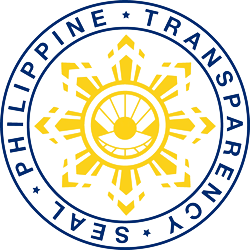Details for Terminated GSP
Korea GSP
Korea’s Generalized System of Preferences
Impact of Korea’s GSP Termination
for Philippine
Businesses: Navigating the Transition
Overview of Korea’s Generalized System of Preferences (GSP)
Implications of the GSP Removal for Philippine Exporters
The removal of GSP benefits means that Filipino exporters will now face standard tariffs under Korea's Most Favored Nation (MFN) scheme. This increase in tariffs is expected to affect the competitiveness of Philippine products in the Korean market, especially in industries such as:
- Agriculture
- Textiles
and
Garments - Manufactured
Goods
-
Agriculture
Products like coconut, fruits, and fishery products will no longer receive preferential treatment, leading to higher costs for Korean importers and reduced demand for Philippine goods.
-
Textiles and Garments
The tariff-free access previously enjoyed by Philippine textile and garment exporters will be revoked, making these goods more expensive for Korean buyers.
-
Manufactured Goods
Industrial products, electronics, and machinery exported to Korea will now be subject to standard tariff rates, impacting their competitiveness.
Strategies to Mitigate the Impact of GSP Loss
Despite the challenges, Philippine businesses can adopt several strategies to remain competitive in the Korean market:
While the GSP benefits are no longer available, businesses should explore whether existing bilateral trade agreements between the Philippines and Korea, such as the ASEAN-Korea Free Trade Agreement (AKFTA), can offer tariff concessions for specific products.
With increased tariffs, Philippine exporters should reassess pricing strategies to absorb some of the additional costs or renegotiate contracts with Korean buyers. Focusing on operational efficiencies may help reduce production costs and maintain competitive pricing.
Shifting attention to high-value products can help offset the loss of GSP benefits. For instance, premium agricultural products, high-quality textiles, or specialized manufactured goods may still find a market in Korea despite higher tariffs, provided they offer unique value.
By enhancing product differentiation through quality improvements, branding, and sustainability efforts, Philippine exporters can justify higher prices and appeal to the Korean market’s demand for premium goods.
Affected Sectors and Tariff Changes
Philippine exporters in the following sectors will be significantly affected by the GSP termination:
Key exports such as bananas, coconut oil, and seafood will face higher tariffs, likely reducing their price competitiveness in Korea. Businesses should explore premium branding and niche markets to maintain their foothold.
The Philippine textile industry will lose its competitive edge as tariff exemptions are revoked. Exporters in this sector should focus on product innovation, eco-friendly materials, or explore other regional markets to diversify their risks.
Manufactured goods, particularly electronics and machinery, will now be subject to Korea’s MFN tariffs. Philippine businesses should explore alternative markets or renegotiate terms with existing buyers to absorb the additional costs.
Preparing for the Post-GSP Environment
To adapt to the new trade landscape, Philippine businesses should take the following actions:
Review current export contracts with Korean buyers and prepare to renegotiate terms to account for higher tariffs. Transparency in pricing changes and maintaining strong buyer relationships will be essential during this transition.
Philippine businesses should consider entering new markets where GSP benefits or other preferential trade agreements remain in place. Diversification can help offset the potential losses in the Korean market.
Engage with government agencies such as the Philippine Export Development Council or the Department of Trade and Industry (DTI) for advice and assistance. These organizations can provide information on alternative markets, trade financing, and strategies to cushion the impact of GSP removal.
FAQs for Philippine Exporters on Korea’s GSP Termination
Why did Korea remove GSP benefits for the Philippines?
Korea regularly reviews its list of GSP beneficiaries based on economic growth and trade relations. The removal reflects the Philippines’ economic development, which no longer qualifies it for preferential tariffs under Korea’s GSP.
What tariffs will Philippine products face in Korea now?
Philippine products will now be subject to Korea’s Most Favored Nation (MFN) tariffs, which vary by product category. These rates are generally higher than the preferential rates under the GSP.
Are there alternative trade agreements that can help mitigate the impact?
Yes, the ASEAN-Korea Free Trade Agreement (AKFTA) and other regional agreements may offer preferential tariffs on certain products. Philippine exporters should explore how these agreements can apply to their goods.
Conclusion: Strategies for Long-Term Success
Document
Japan GSP
Japan’s Generalized System of Preferences
The Impact of Japan’s GSP Termination
for Philippine
Businesses: Navigating the Changes
Overview of Japan’s Generalized System of Preferences (GSP)
Implications of the GSP Removal for Philippine Exporters
The termination of GSP benefits for the Philippines means that Filipino exporters will now face higher tariffs when shipping goods to Japan. This loss of preferential treatment could significantly affect the competitiveness of Philippine products in Japan, particularly in key industries such as:
- Agriculture
- Textiles
and
Garments - Manufacturing
and
Industrial Goods
-
Agriculture
Products like bananas, pineapples, and coconut-based goods will no longer benefit from reduced tariff rates, making them less price-competitive.
-
Textiles and Garments
The tariff-free access for Philippine-made garments and textiles will be revoked, resulting in higher costs for Japanese importers and a potential decline in demand.
-
Manufacturing and Industrial Goods
Items such as electronics, machinery, and other industrial goods will now be subject to Most Favored Nation (MFN) tariff rates, increasing export costs and reducing market share.
Strategies to Mitigate the Impact of GSP Termination
Despite the challenges posed by the loss of GSP benefits, Philippine businesses can adopt several strategies to remain competitive in the Japanese market:
While the GSP is no longer available, exporters should explore whether any bilateral trade agreements between the Philippines and Japan offer similar tariff concessions. For example, the Japan-Philippines Economic Partnership Agreement (JPEPA) may provide some relief in terms of tariff reductions on specific goods.
Philippine businesses must reassess their cost structures to maintain competitiveness in the Japanese market. This could involve streamlining production processes, sourcing cheaper raw materials, or leveraging economies of scale to absorb the increased tariff costs.
To counteract the increased tariffs, Philippine exporters could shift focus towards niche products or premium market segments in Japan. High-value agricultural products or specialized garments may still find a market in Japan if they offer a distinct advantage over competitors’ products.
Developing stronger brand identity and enhancing product differentiation through quality, innovation, or sustainability can help justify higher prices and attract Japanese consumers who prioritize premium or unique offerings.
Affected Sectors and Tariff Changes
Philippine businesses in the following sectors will be particularly affected by the loss of GSP benefits in Japan:
Previously enjoying preferential treatment, products such as tropical fruits, seafood, and coconut derivatives will now face higher import duties. This shift may result in reduced market share as cheaper alternatives from other countries remain available under GSP.
The Philippine textile and garment industry, a major exporter to Japan, will lose its competitive pricing edge as tariffs on clothing items increase. Exporters in this sector will need to reassess their market strategies and consider adding value through design, sustainability, or branding.
Manufactured goods, including electronics and industrial machinery, will now be subject to Japan’s MFN tariffs. As these products face steeper tariffs, businesses may need to adjust their pricing strategies or consider alternative markets where preferential access remains.
Preparing for the Post-GSP Environment
To minimize the impact of losing GSP benefits, Philippine businesses should consider the following actions:
Philippine exporters should conduct a detailed review of their current contracts with Japanese buyers. With the new tariff environment, it may be necessary to renegotiate terms or find ways to share the additional costs with importers.
By expanding into new markets where GSP or preferential trade agreements remain in place, Philippine businesses can offset the losses in the Japanese market. Exploring opportunities in other Asian markets or countries with which the Philippines has favorable trade relations is a practical approach.
Philippine exporters should engage with government agencies such as the Department of Trade and Industry (DTI) or the Philippine Export Development Council to obtain support and information on trade facilitation, market access, and financial aid programs that can help mitigate the challenges arising from the loss of GSP benefits.
FAQs for Philippine Exporters on Japan’s GSP Loss
Why was the Philippines removed from Japan’s GSP beneficiary list?
The removal is part of Japan’s regular GSP beneficiary review, which assesses a country’s economic development and trade competitiveness. As the Philippines has reached a certain level of economic development, it no longer qualifies for GSP benefits.
What tariffs will Philippine products now face in Japan?
Philippine products will now be subject to Japan’s Most Favored Nation (MFN) tariff rates, which vary by product category. These rates are generally higher than the preferential tariffs previously applied under the GSP.
Are there other trade agreements that can help mitigate the impact of GSP loss?
Yes, the Japan-Philippines Economic Partnership Agreement (JPEPA) offers some preferential treatment for specific products. Philippine businesses should explore how JPEPA might apply to their exports.
Conclusion: Strategies for Exporters Post-GSP
Document
Norway GSP
Norway’s Generalized System of Preferences
Impact of Norway’s GSP Termination
for Philippine
Businesses: Navigating the Changes
Overview of Norway’s Generalized System of Preferences (GSP)
Implications of the GSP Removal for Philippine Exporters
The removal of GSP benefits means that Philippine businesses will now face higher tariffs when exporting goods to Norway, making it more challenging to compete with other countries still enjoying preferential access. The sectors most affected by this change include:
- Agriculture
- Textiles
and
Garments - Manufacturing
Goods
-
Agriculture
Exports such as bananas, coconut products, and seafood will no longer benefit from duty-free or reduced tariff access.
-
Textiles and Garments
The once competitive pricing advantage in the Norwegian market due to reduced tariffs on clothing and fabric exports will be lost.
-
Manufactured Goods
Products like electronics and industrial machinery will now be subject to Norway’s full Most Favoured Nation (MFN) tariff rates.
Strategies to Mitigate the Impact of GSP Loss
Philippine businesses can take several steps to mitigate the negative impacts of losing GSP benefits in Norway:
While the GSP benefits with Norway are no longer available, businesses should explore other bilateral or regional trade agreements that may offer preferential access to new markets. Norway is part of the European Free Trade Association (EFTA), and reviewing agreements under this framework could help identify new opportunities.
With the increase in tariffs, it’s essential for Philippine exporters to reevaluate their pricing strategies. Businesses may need to absorb some of the additional costs or pass them onto the consumers, depending on the demand elasticity of their products in Norway.
Shifting the focus to high-value, niche products can help maintain competitiveness despite higher tariffs. For example, premium agricultural products or specialized garments may still find a market in Norway if they offer unique value propositions.
Philippine exporters can work on building stronger brand identities and marketing campaigns to differentiate their products in the Norwegian market. Stronger branding can help justify higher prices and retain consumer loyalty despite the increased costs.
Affected Sectors and Tariff Changes
Philippine businesses in the following sectors will experience significant changes as they lose access to GSP benefits:
Products such as tropical fruits, fish, and coconut derivatives will face higher tariffs, likely reducing their price competitiveness in Norway.
Clothing and fabrics will no longer enjoy the reduced or zero-tariff treatment, making them more expensive for Norwegian importers. Philippine exporters in this sector should focus on unique designs or sustainable practices to remain competitive.
Industrial products, including electronics and machinery, will now be subject to Norway’s Most Favoured Nation (MFN) tariff rates, raising the overall cost of these goods in the Norwegian market.
Preparing for the Post-GSP Scenario
To adjust to this new landscape, Philippine businesses should adopt the following measures:
Exporters should conduct an in-depth review of their current export channels and buyers in Norway. It may be beneficial to renegotiate contracts or explore new buyers who are willing to accommodate the new price structures post-GSP.
Philippine exporters should look beyond Norway and target new markets where preferential trade agreements or GSP benefits are still in place. This could involve expanding into other Scandinavian countries or the broader European market.
Philippine businesses can seek guidance and support from trade bodies such as the Philippine Export Development Council or Department of Trade and Industry (DTI). These organizations can provide up-to-date information on alternative markets, trade agreements, and financial support options to cushion the effects of losing GSP benefits in Norway.
FAQs for Philippine Exporters Regarding the GSP Loss
Why did the Philippines lose GSP benefits with Norway?
The removal of GSP benefits was a result of changes in Norway’s preferential trade policies, which have reclassified the Philippines, removing it from the list of beneficiary countries.
What tariffs will Philippine products now face in Norway?
Philippine products will now be subject to Norway’s Most Favoured Nation (MFN) tariffs, which vary depending on the product category. These rates are typically higher than those previously enjoyed under the GSP.
Are there other trade agreements that can help offset the loss of GSP benefits?
Yes, businesses should explore trade agreements within the framework of EFTA or other bilateral agreements that may provide alternative access to preferential markets.





